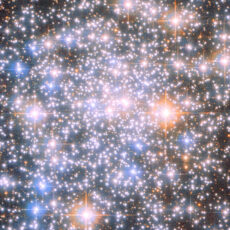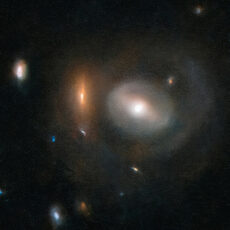
Located 49 million light-years away in the constellation Virgo, this Hubble Space Telescope image of spiral galaxy NGC 4951 tilted diagonally, with thick, cloudy spiral arms wrapping around the core. These arms are filled with pink patches marking new star formation, depicted as young blue stars.

The data NASA astronomers used to make this image were captured by Hubble as part of a program to examine how matter and energy travel in nearby galaxies. Since galaxies continuously undergo a cycle of star formation, the gas in a galaxy forms molecular clouds. These clouds then collapse to create new stars, which then disperse the clouds they formed from with powerful radiation or stellar winds in a process called feedback.
- ADVANCED TECH MEETS ICONIC DESIGN: The NexStar 8SE pairs Celestron’s legendary orange tube with a fully computerized GoTo system—ideal for those...
- 8-INCH SCHMIDT-CASSEGRAIN OPTICS: The large 8" aperture gathers enough light to reveal fine lunar details, cloud bands on Jupiter, and deep-sky...
- FULLY AUTOMATED GoTo MOUNT WITH NEXSTAR+ HAND CONTROL: Use the NexStar+ hand control to select from a 40,000+ object database. The computerized mount...
NGC 4951 is also a Seyfert galaxy, a type of galaxy that has a very bright and energetic nucleus called an active galactic nucleus. This image demonstrates well how energetic the galaxy is, and some of the dynamic galactic activity which transports matter and energy throughout it: a shining core surrounded by swirling arms, glowing pink star-forming regions, and thick dust,” said the ESA.













